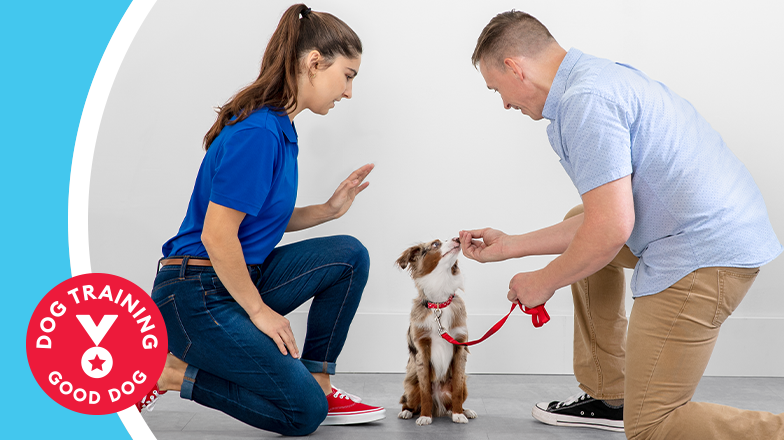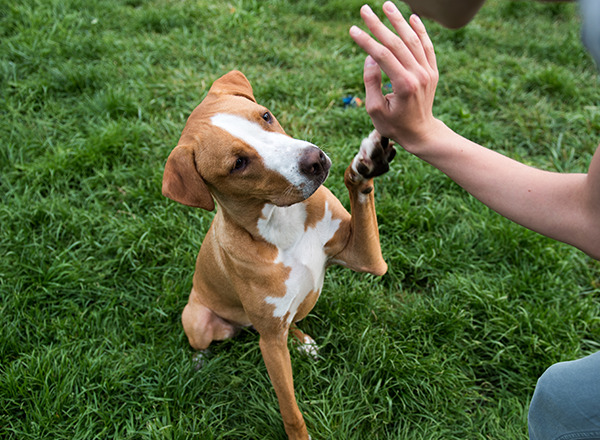How to Master Dog Training and Build a Stronger Bond with Your Pup
Transform Your Dog's Habits With Proven Training Approaches
Changing your pet's habits requires a nuanced understanding of their individual qualities and demands, as well as the application of proven training techniques. Consistency in your training approach not just boosts obedience yet additionally cultivates a deeper bond of count on and respect in between you and your animal.
Comprehending Pet Actions
Understanding canine actions is crucial for effective training and communication between human beings and their canine companions. Pet dogs, as social animals, show an array of behaviors influenced by genetics, environment, and experiences - Dog training. Identifying these behaviors assists owners customize their training approaches to fulfill the details demands of their canines
Secret aspects of canine habits include body movement, vocalizations, and social interactions. For circumstances, a wagging tail commonly shows enjoyment, while a reduced head might indicate entry or anxiety. Comprehending these signals can assist proprietors analyze their pet dog's psychological state and respond suitably. Additionally, socialization plays an important duty in forming actions; pets that communicate favorably with other pets and different individuals are generally much more well-adjusted and versatile.
In addition, recognizing stress signals-- such as panting, avoidance, or pacing behaviors-- can stop rise right into more serious problems. Proprietors who are attuned to their pet dog's habits can create a caring and safe setting, cultivating trust fund and enhancing the training process. Inevitably, a deep understanding of canine actions lays the structure for a harmonious relationship and reliable training results, making certain both dogs and their owners prosper together.
Positive Support Strategies
Positive reinforcement methods are extensively acknowledged as one of one of the most reliable methods for training canines, cultivating a favorable discovering setting. This technique entails rewarding preferred habits with deals with, appreciation, or play, therefore motivating the canine to repeat those actions. Unlike corrective techniques, positive support develops trust fund and strengthens the bond in between the trainer and the dog.
Rewards must be given promptly following the desired behavior to assist the pet dog make the connection. Consistency is likewise essential; utilizing the exact same commands and benefits aids the canine recognize what is expected.
It is essential to keep in mind that positive support is not concerning bribery; instead, it has to do with reinforcing excellent actions. With time, as the pet discovers to link specific actions with positive results, the regularity of rewards can be slowly minimized, transitioning to verbal praise or periodic rewards. This method not only motivates obedience however additionally promotes a satisfied and confident pet, making training an extra delightful experience for both celebrations involved.
Resolving Common Issues
Attending to usual concerns during pet training is important for guaranteeing a harmonious and successful partnership between the pet dog and its proprietor. Many pet dog proprietors come across behavioral obstacles, such as too much barking, jumping, and chain drawing. Understanding the origin causes of these actions is vital for reliable training.
Extreme barking might originate from boredom, stress and anxiety, or a lack of socialization. To mitigate this, provide adequate exercise, psychological stimulation, and possibilities for social communication with both human beings and other canines. Leaping can often be an indicator of excitement or a need for attention. Training the pet dog to rest upon welcoming can reroute this behavior positively.
Leash pulling is one more widespread issue, frequently arising from a pet's eagerness to check out. Making use of proper leash managing techniques, integrated with training procedures that urge loose-leash walking, visit the site can considerably enhance this actions.
Furthermore, concerns like source guarding or separation stress and anxiety call for customized techniques. Steady desensitization and counter-conditioning can be effective in dealing with these obstacles. By identifying and proactively managing these common issues, dog owners can cultivate an extra satisfying training experience and enhance the bond with their canine friends.
Uniformity in Training

To achieve uniformity, it is important that all participants of the home abide by the exact same training approaches. Using the very same verbal signs and hand signals ensures that the pet dog obtains consistent messages. Additionally, the timing of modifications and rewards ought to correspond; prompt support increases the chance that the canine will certainly associate the habits with the result.
Routine technique sessions, coupled with structured routines for feeding, strolling, and play, help pet dogs prepare for and understand their environment, making them a lot more responsive to training. Inevitably, a knockout post uniformity fosters a sense of safety and trust fund, empowering dogs to learn much more successfully.
Structure a Strong Bond
How can fostering a strong bond between a dog and its proprietor boost the training experience? A strong partnership improved trust and regard works as the foundation for effective training. When a pet really feels safe in its link with its owner, it is most likely to show favorable habits and be receptive to learning. This bond motivates the pet dog to engage fully in training sessions, as it views the proprietor as a resource of assistance and support.
Furthermore, a solid bond promotes better interaction. Canines are experienced at reviewing human hints, and a relying on connection enables more clear signals during training. Proprietors that invest time in building this bond via play, socialization, and favorable reinforcement develop an atmosphere where dogs feel anxious and motivated to discover.
Additionally, a well-established link can reduce anxiousness and behavioral concerns, as canines are much less likely to act out when they feel recognized and taken care of. Therefore, focusing on the growth of a strong bond not just boosts the training experience but additionally adds to a happier and much more well-adjusted pet. Eventually, the journey of training transforms right into a collective collaboration, leading to lasting behavioral improvements.
Final Thought

Owners who are attuned to their dog's actions can produce a risk-free and nurturing atmosphere, promoting trust and enhancing the training procedure. Eventually, a deep understanding of canine behavior lays the structure for an unified connection and efficient training outcomes, making certain both pets and their owners thrive with each other.
Attending to typical issues throughout canine training is important for making certain a effective and harmonious partnership between the canine and its proprietor.Consistency is a keystone of efficient dog training, as it develops a clear framework for the pet to recognize behaviors and assumptions.In conclusion, changing a pet dog's behavior with verified training methods needs an understanding of canine behavior, the application of positive support techniques, and a focus on uniformity.